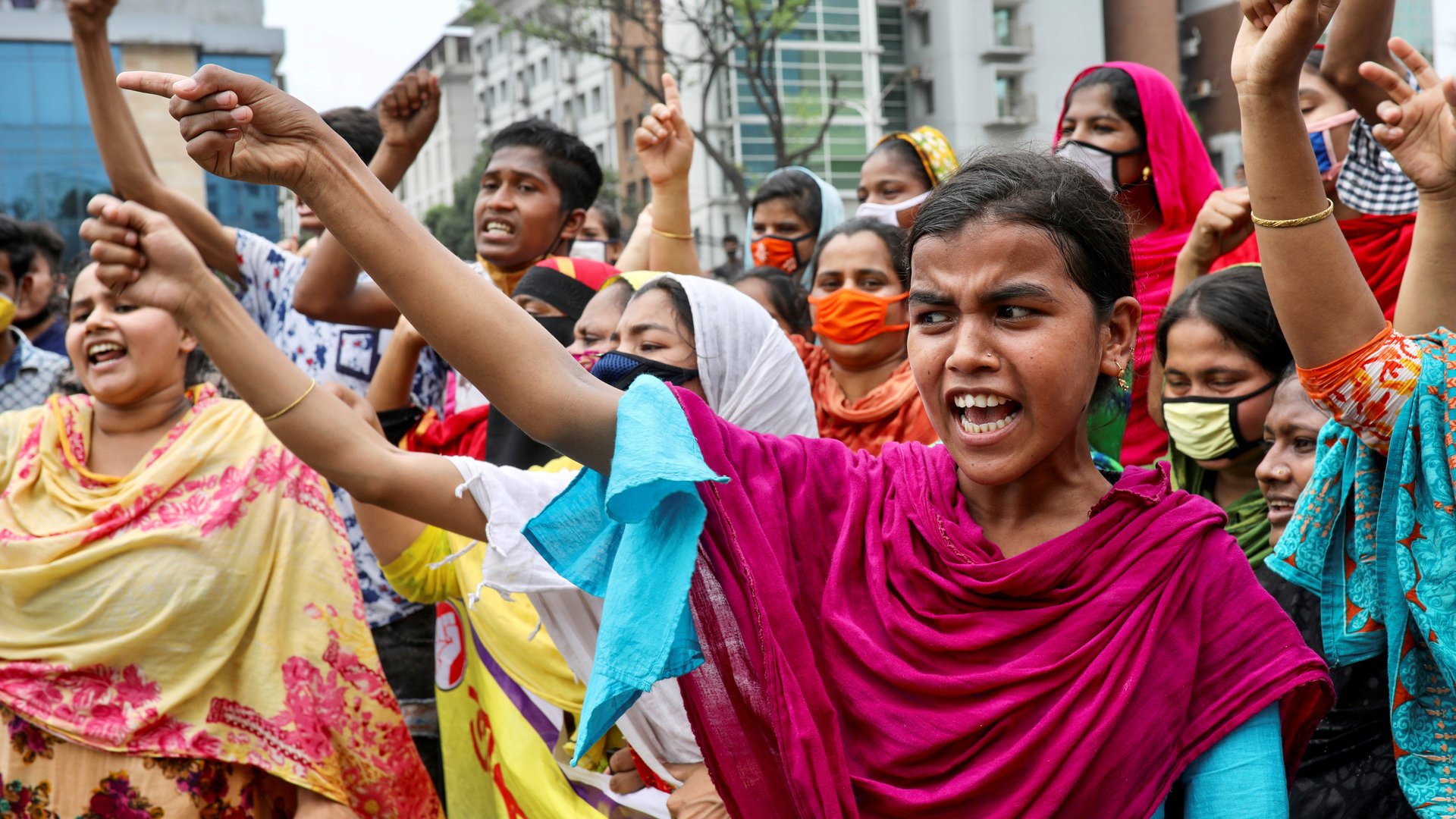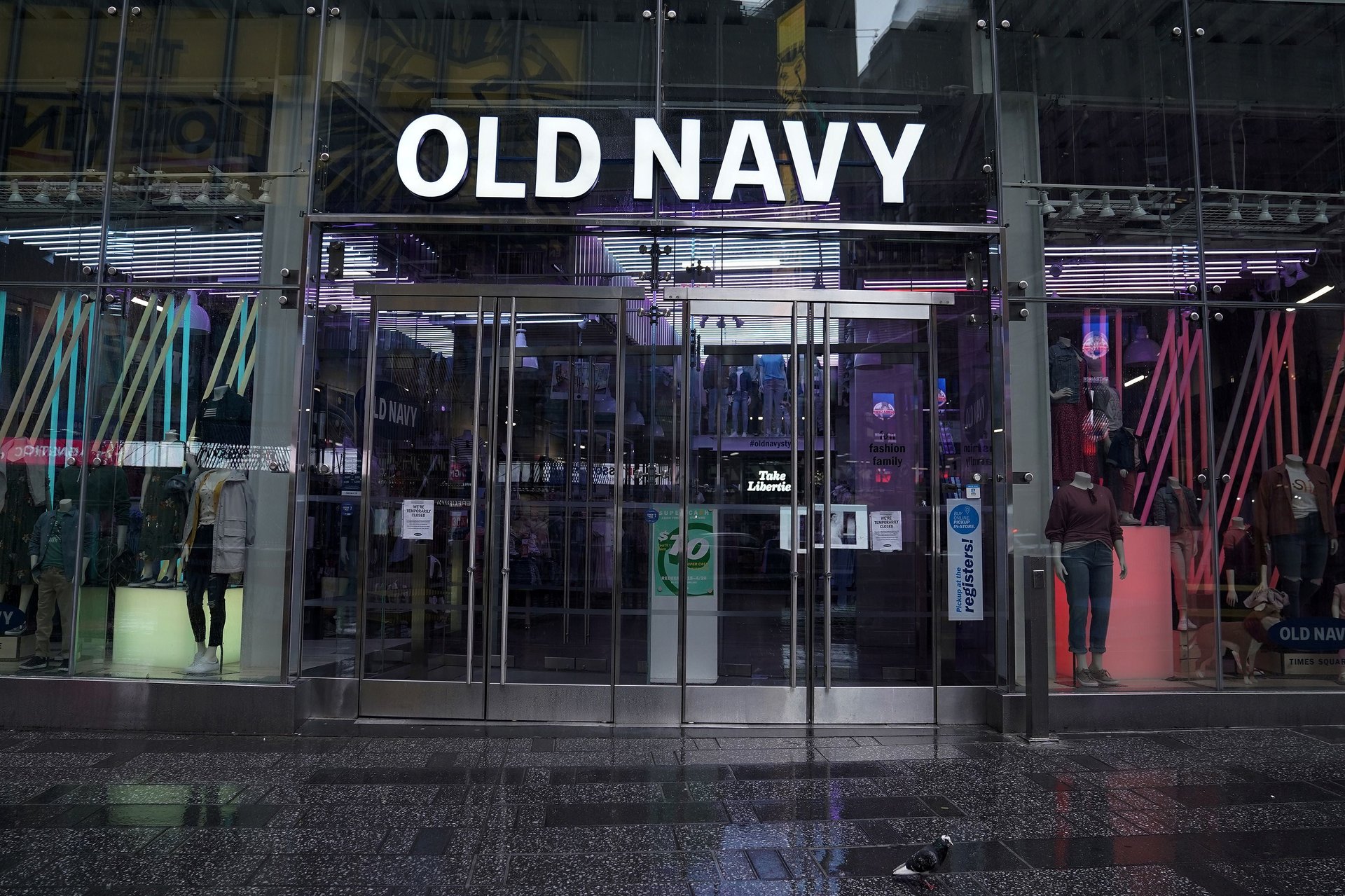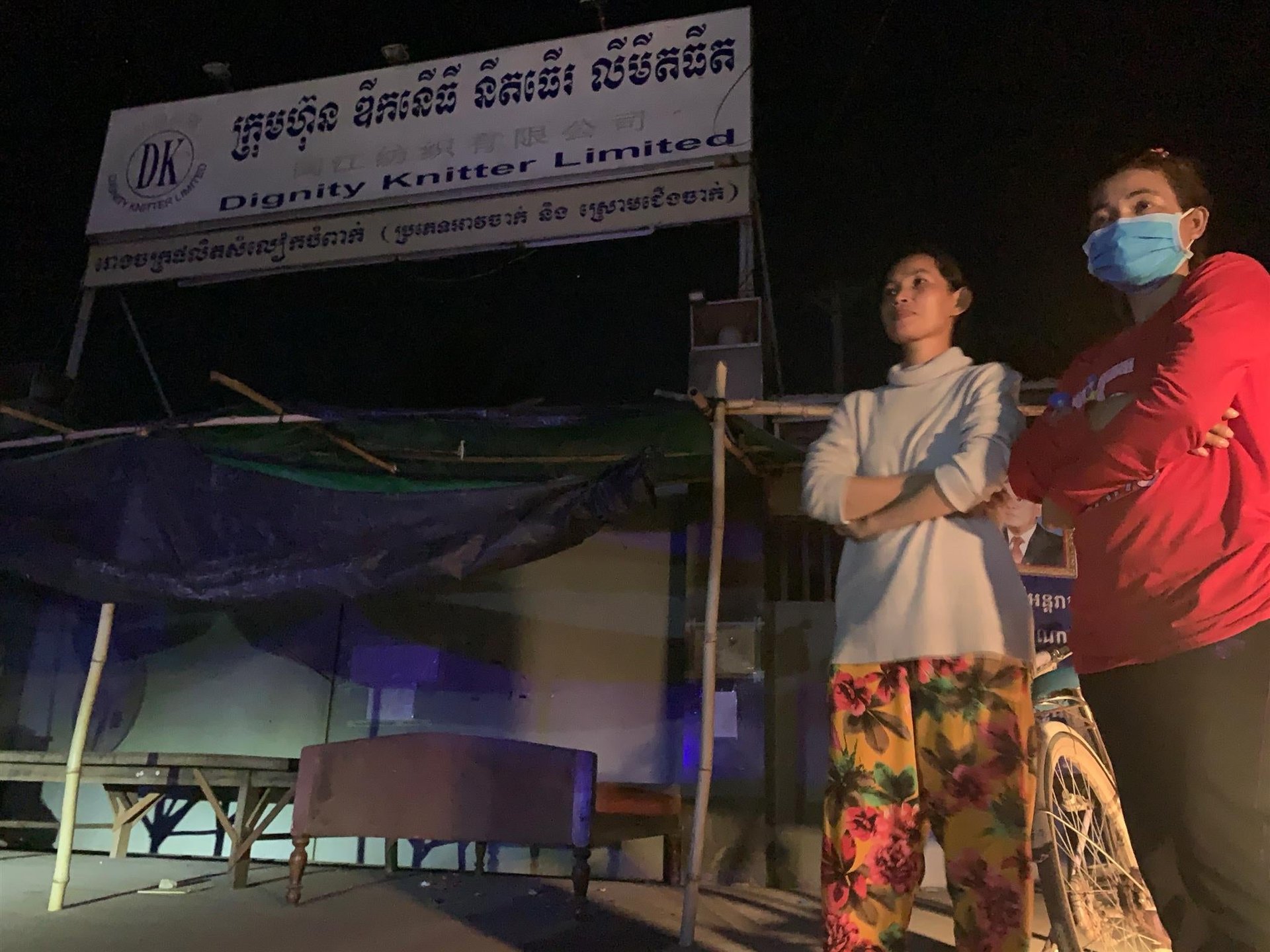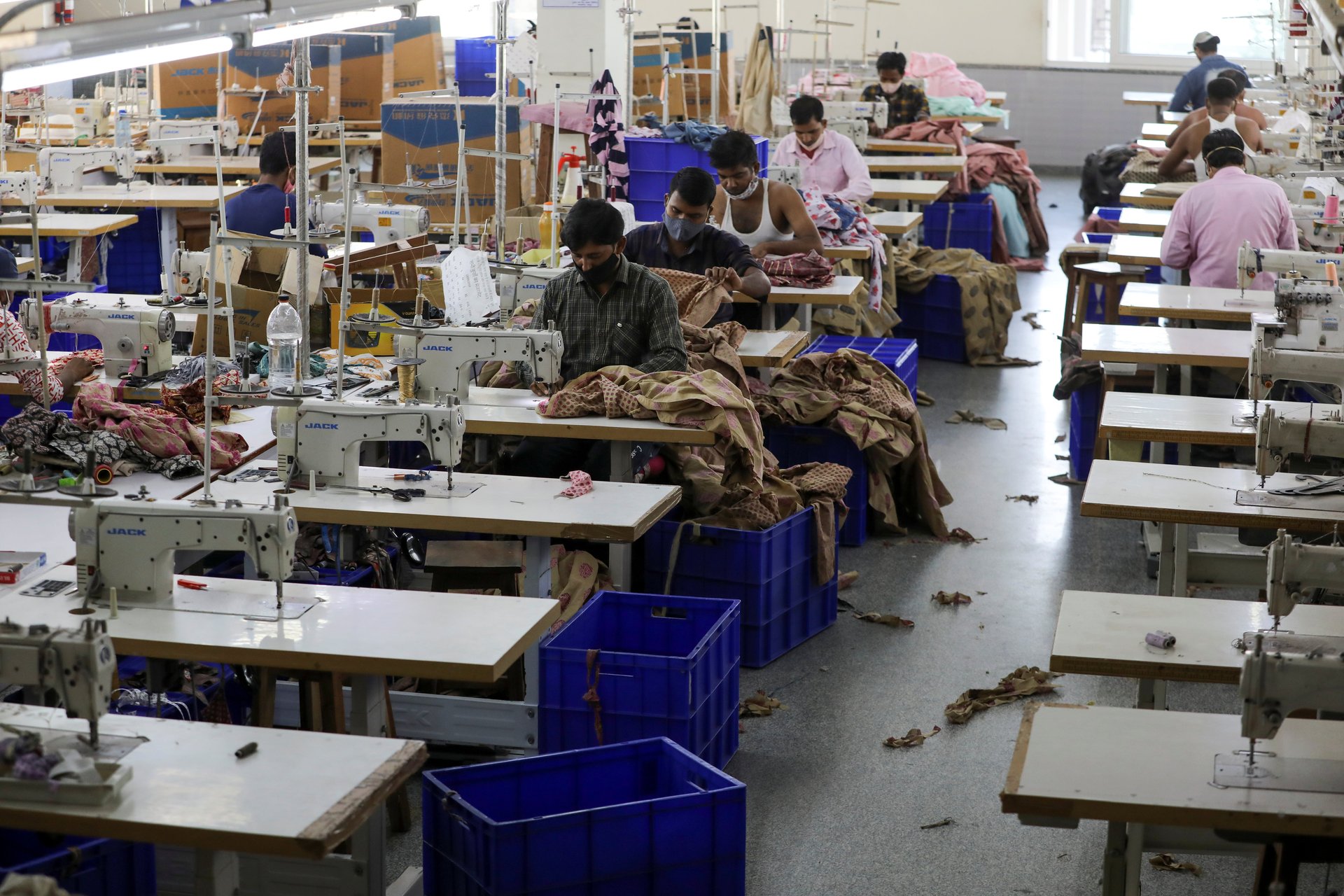Who is responsible for the world’s garment workers?
With the wages she earned as a garment worker at Yi Da Manufacturer, a factory in Cambodia, Douk Sovann says she would normally spend about $10 a day on food. That amount would feed her and her three daughters, who range in age from 10 to 17.


With the wages she earned as a garment worker at Yi Da Manufacturer, a factory in Cambodia, Douk Sovann says she would normally spend about $10 a day on food. That amount would feed her and her three daughters, who range in age from 10 to 17.
Then came the pandemic, and business at the factory plummeted. Sovann was furloughed, and her monthly income fell from about $250 a month to just $70, between the $40 in assistance she received from the government and $30 from the factory. She had no choice but to cut the family’s food budget. During that period the four of them lived on $2.50 to $3 a day.
The family lives in Kandal province, on the outskirts of Phnom Penh, Cambodia’s capital, and Sovann, 39, cares for the girls by herself with her income from Yi Da, where she started working about five years ago. The factory produces clothes for customers that include international fashion brands. Gap, Levi’s, and Target are among the companies that include Yi Da on their publicly shared lists of suppliers. Sovann also knows some of the companies because, after starting on the sewing line, she now works in the warehouse and distributes the labels with their names to the workers who stitch their clothes.
Last year, as Covid-19 battered the fashion industry and sales of new clothes plunged in countries such as the UK and the US, Sovann learned that she and other workers at Yi Da would be suspended for two months. The factory explained that transport and shipping of its clothes had stopped, and some brands also reduced their orders with Yi Da, or canceled them entirely. (Levi’s, Gap, and Target all committed to paying supplies in full for in-progress orders, though many other companies have not.)
The financial strain had other consequences, too. Her children had to stop going to the extra classes they normally attend, and the middle daughter, who is 16, quit school. Because she’s a minor, she’s been unable to get a job, but she is learning to apply makeup at a salon.
These days the factory is running again, but Sovann says orders are still down compared to what they were before the pandemic. It’s been difficult trying to support her girls by herself. She has a loan to pay back as well. It’s all on her shoulders.
Sovann is one of millions of garment workers struggling in the fallout from Covid-19. In countries such as Cambodia and Bangladesh, where clothing exports are central to the economy, the garment industries have largely developed around supplying international fashion companies that order items by the thousands. But without shoppers in the US or Europe buying as much, and needing to reduce costs to keep their businesses healthy and shareholders happy, fashion companies canceled billions of dollars worth of orders and have remained cautious about placing new ones. Some of those who are ordering are asking for discounts and more advantageous terms, such as longer periods to pay.

The effects have rippled through countries like Cambodia and Bangladesh, where the president of the country’s leading trade group for clothing manufacturers recently issued a plea to international brands not to abandon the factories that supply them. The factory owners face their own hardships, but it’s the workers they employ, who exist far beyond the view of corporate boardrooms or the eyes of shoppers, contending with the gravest repercussions. Many are battling against hunger and taking on debt just to get by.
What will happen to them as Covid-19 continues to hammer the world’s economies is unclear. Governments of big garment-exporting countries are providing a measure of support, and the European Union has pledged assistance to Bangladesh. But it may not be enough.
“This is an unprecedented crisis,” K.M. Abdus Salam, a senior government labor official in Bangladesh, told Reuters in January. “The government can’t help alone. Major market players, including brands, buyers, and governments of sourcing countries, manufacturers, everyone has a role to play to ensure faster recovery of the sector.”
Workers such as Sovann have little choice but to hope everyone does their part. The situation raises difficult questions about the dynamics of global outsourcing and what share of responsibility companies should carry for the far-off workers whose labor they depend on.
The gap between garment workers and the brands who rely on them
In the fashion industry, brands don’t usually own the factories that make their clothes. They contract independent factories, sometimes through middlemen who handle the particulars, meaning the workers sewing their clothes are not their direct employees.
This outsourcing has been part of the industry for more than a century, only the distances involved weren’t as great. In the US, for instance, garment factories sprouted in urban centers such as New York in the 19th century. Later, as fashion companies sought cheaper options, production migrated to southern states.
Then, around the late 1960s, companies started to move manufacturing overseas, taking advantage of booming textile hubs such as Hong Kong, South Korea, and Taiwan that were remaking their economies around exports. From these centers they steadily spread to southeast Asia and China, which grew into the world’s biggest clothing producer. With wages currently rising in China and the country shifting focus away from cheap, labor-intensive products, more garment work is now flowing to countries like Vietnam, Bangladesh, and Cambodia.
Today, the US imports nearly all its clothing, mostly from developing nations in Asia where labor is far cheaper. Companies are thousands of miles from the workers who actually make their clothes, and sometimes a few steps removed in liability if they’re using intermediate sourcing firms. Their immediate priorities are generally their own employees and their balance sheets. How responsible are they for indirectly contracted workers halfway around the world?
Labor activists say the arrangement doesn’t exculpate them. ”From where we stand, regardless of whether these workers are directly employed by these companies or not, these companies do bear a substantial responsibility for the workers that sew the clothes that generate their profit,” says Penelope Kyritsis, director of strategic research for Worker Rights Consortium (WRC), a Washington DC-based labor-rights watchdog that receives funding from a group of affiliated colleges and universities. She points to the business model behind low-cost, high-volume fashion as the root of the problem.
Generally, companies seek out the factories that offer the best mix of speed, quality, and cost. The factories, who are in competition with each other for work, have an incentive to keep their prices as low as possible. The governments of their countries are also competing for export business and may want to keep worker wages low to attract foreign firms. (While these jobs can certainly be exploitative, they are also important pathways out of poverty.)
Critics of the fashion industry argue that even if international companies aren’t setting prices themselves, they use this situation to their advantage in order to bargain down costs. It contributes to constant downward pressure on clothing costs that has actually made clothes cheaper relative to other goods over time. Factory owners aren’t blameless, as they can also treat workers like commodities. But ultimately it’s the companies who have the most leverage on prices, creating a trickle-down effect.
“We have a global supply chain model that has benefited brands and retailers over decades, and that has left workers with poverty wages that left them in an especially vulnerable position when the pandemic hit,” Kyritsis says.
Kyritsis co-authored a study on garment workers going hungry (PDF) across nine countries in the pandemic. Among the more alarming findings was that 75% of the nearly 400 workers interviewed reported taking on debt to buy food, she said. “That can have a very pernicious effect and lock workers into conditions where there may be heightened labor abuses, including forced labor,” she says.
At Yi Da, debt is a problem for workers, several of whom were introduced to Quartz by WRC. Ouch Sokna, a 38-year-old sewer at the factory who uses her income to help support a family of seven, says she already had a loan before the two-month furlough last year. She had to take out another to cover basic expenses while she was waiting for work to resume and is now unable to pay it back. Right now, she says, she can’t afford the costs of her children’s school.
Chham Chany, 33, works at Yi Da with her husband. She says they also had to take out a loan to survive the work stoppage, and also can’t pay it back.
Determining how much responsibility is owned by the companies sourcing from factories such as Yi Da isn’t simple though. Factories are their own businesses, and each usually makes clothes for a number of customers.
“The standard response from the brand would be, ‘Well, I’m only buying 20% of this capacity, so I’m 20% responsible,'” says Miran Ali, managing director of the Bangladesh Garment Manufacturers and Exporters Association (BGMEA), a large trade group. “In very few cases would a brand go more than 50% on a particular factory—in some cases, but not too much. So I would rather say, instead of a brand being responsible to a factory, the brand should be responsible to certain principles of doing business.”
Leaving partners to fend for themselves in hard times is not one of them, he adds.
Purchasing practices in the pandemic
Factories are undoubtedly hurting from the lower order volumes as fashion companies buy less new clothing, but according to Ali, perhaps the bigger issue has been companies not honoring the terms of their previous agreements. The consequences for factories and workers are greater than just operational headaches.
When a mass-market brand places an order with a supplier in Bangladesh, it’s usually the factory that purchases the fabric and other materials needed. They’ll have a contract on the payment terms, so the brand might have 45 days to pay after the factory delivers the finished clothing, for instance. That’s when the factory recoups the expenses and makes its profit.
If a brand cancels an order, demands a price cut, reduces its order, or requires more time to pay, the factory can get stuck with its funds tied up in raw materials. Often they survive on thin margins to begin with. An abrupt halt to their cash flow can leave them without the cash to pay their employees, leading to workers having their hours reduced, or being furloughed, or laid off.
These sorts of scenarios became widespread, especially as retail bankruptcies mounted. “The reaction of the buyers was not a country specific reaction,” Ali says. “It wasn’t a brand specific reaction. It was almost a general mass slaughter of goodwill.”

Around the start of the pandemic, Target canceled an estimated $24 million in orders in Bangladesh alone, according to a joint report last year by WRC and Penn State University’s Center for Global Workers’ Rights, though it has committed to paying for all its orders. On an earnings call last May, CEO Brian Cornell talked about how the company was handling its inventory, including apparel, which had seen a dramatic slowdown in sales. “One of the teams that we really need to acknowledge as we sit here today is our Target sourcing team, who throughout the quarter has done a terrific job of, at some points, canceling and then chasing inventory as we’ve seen changes in trends,” he said.
The company declined to answer any questions about its business with Yi Da. A spokesperson said in a statement that the company works with partner organizations such as the non-profit Better Factories Cambodia to support garment workers in the country.
Gap would also not discuss its business with Yi Da but has acknowledged initially canceling a small share of orders with suppliers. Mark Snyder, communications manager at Gap, said the company is working with stakeholders including garment factories, governments, and worker organizations to determine the best ways to support workers in its supply chain. “While we extended payment terms on certain orders, in the immediate term we are providing low-cost financing to our vendor partners, and are working with our banking partners to increase the amount of funds available within the program as we move forward,” Snyder said in an email.
Levi’s did not cancel any orders or ask suppliers for discounts, the company says. In an emailed statement, it said it did extend payment terms consistent with the rest of the industry, but it has also worked to ensure its suppliers have access to financing for working capital. It helped Yi Da’s parent company, Crystal, get into the Global Trade Supplier Finance Program managed by the International Finance Corporation, part of the World Bank, which allows suppliers to get early payments for orders at advantageous rates. Levi’s added that, while it did initially lower its outlook for future orders at Yi Da, its volume of orders at the factory has grown as shopper demand recovered and is slightly above its level in January 2020.
Levi’s and Gap have had their own business challenges from Covid-19. In the year through Nov. 29, Levi’s reported a loss of $127 million (pdf) as sales dropped 23% versus the same period the year before. Gap recorded a loss of $899 million (pdf) in the roughly 10-month period through Oct. 31, with its sales falling 20%.
Target is a different story. Like other big-box retailers in the US, it has thrived as shoppers stock up on necessities and redirect their discretionary spending to home goods and other items. It’s not just selling products such as canned goods and toilet paper. Its new activewear line, which generally costs less than competing brands, recently reached $1 billion in annual sales. (Activewear has been among the few clothing categories to remain strong in the pandemic.) Overall, the company’s sales in the nine months through Oct. 31 grew 19% and profit rose to nearly $3 billion.
Garment makers, meanwhile, see a need to rebalance power so their fate isn’t left in the hands of others.
Imbalance of power
The Transformers Foundation is a group of stakeholders from farmers to factories in the denim industry advocating for change. When it formed at the start of 2020, it expected its first report to look at environmental issues. “Then the COVID-19 crisis happened,” the foundation said in what actually ended up being its debut report, which focused on what it called unethical behavior. “We believe environmental issues are crucial, but the crisis has exposed how deep the cracks in the supply chain go. We have a rare window of opportunity to fix the power differential that allowed brands, retailers, and importers to walk away from their contracts with suppliers without almost any consequence.”
The report surveyed 25 companies across the denim supply chain. While it was a small number in one particular segment of the clothing industry, meaning it might not fully represent fashion as a whole, the results were informative. Several suppliers to big denim companies reported being on the receiving end of positive practices, including companies helping to secure low-cost financing, paying for orders in advance, and taking responsibility for all the fabrics and trims—items such as zippers and buttons for instance—their suppliers ordered. Slightly more than half, in fact, felt their customers were honest and transparent.
Several also said they were subject to what the foundation deemed destructive practices, such as canceled orders and delayed payments. “Rarely did brands attempt to put in place measures to protect the livelihood of workers,” the report stated. Ultimately, it seemed up to the brands whether they behaved well or not.

Among the root causes Transformers Foundation identified for some of these problems were overcapacity in jeans manufacturing, which puts too many factories in competition for whatever work they can get, and power being consolidated in the hands of multinational retailers. One of its recommendations to the industry was to try to rectify this power imbalance. An alliance of Asian trade groups is trying to do just that.
In January, garment-manufacturing associations in several countries around Asia announced a groundbreaking pact: They would come together and agree on common positions regarding purchasing practices they expect of big international fashion companies. The associations involved, including large trade organizations in Vietnam, China, Cambodia, Pakistan, Bangladesh, and Myanmar, represent around 60% of global clothing exports, according to their joint statement. For the first time, they would speak to brands in one collective voice.
The BGMEA is part of the group, and Ali one of its spokespeople. “We are already in discussions with Indonesia, Morocco, Egypt, and Turkey,” he says. “If we can get those guys on board, we’ll get over 60% globally. But in the case of certain retailers, we’ll be covering almost 80% to 90% of their entire sourcing.”
The alliance grew out of the STAR Network, an existing federation of trade associations set up in 2016 to share information across countries. Ali says when the pandemic broke out and fashion companies prioritized their own interests, it recognized it could do more. “When this happened, we as a group collectively realized that, while we might compete with each other on a number of things…there are certain things we want to try and work towards collectively so that there are certain minimum standards we can demand,” he explains.
These standards will focus on issues such as order cancelations, covering costs of raw materials, and how long companies take to pay. It will not set prices, Ali emphasizes, since price varies from country to country based on factors such as local laws, and because doing so would violate antitrust laws in many countries. The group is meeting through March to define its “red lines”—the bounds of acceptable behavior from customers. After that, they plan to roll out their new standards.
What’s uncertain, however, is how effective the alliance will be. “Associations have a lot of power if they use it, but historically they don’t,” says Andrew Olah, founder of the Transformers Foundation. “There’s a certain point when you need to also have a plan of what to do when the customers don’t comply.”
Factories in low-income countries are not known for turning down orders. On the contrary, they may accept orders they know they can’t fill, which they then subcontract out, in order to preserve their relationship with a customer. Trade groups don’t micromanage these orders and tell factories which ones they can and can’t take.
Ali says the new initiative by the garment associations won’t blacklist international companies that disregard their terms and block them from ordering clothes at their factories. That would be acting as a cartel, which isn’t allowed under various national antitrust laws. Their collective leverage could still be useful, however. Garment makers in Bangladesh and Vietnam may be in competition, but if they stand together, they can put more pressure on trade associations representing the companies in their home countries to regulate them.
Whether STAR Network can change the power paradigm may hinge on how willing everyone is to cooperate. The issues they’re contending with can’t be fixed unilaterally, which means, depending how you look at it, the plight of garment workers is everyone’s problem, or no one’s but their own. Ultimately it may be on companies to take the lead and actually put principles ahead of profits, as many claim they’re doing. Workers such as Sovann are waiting.